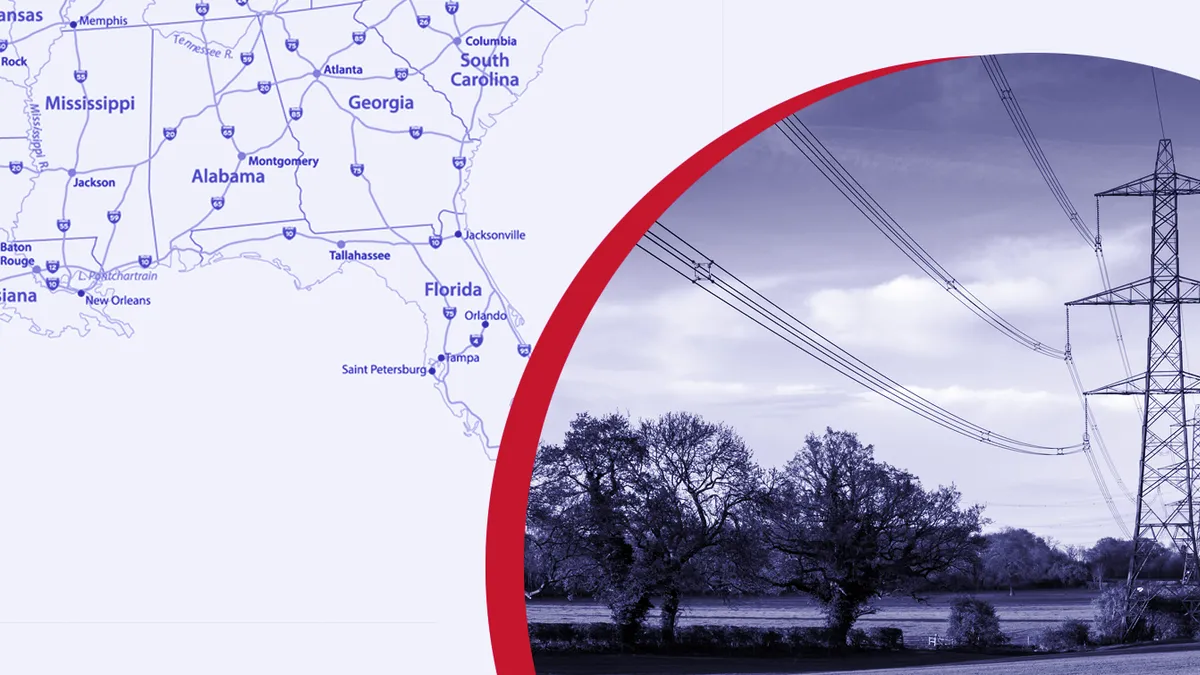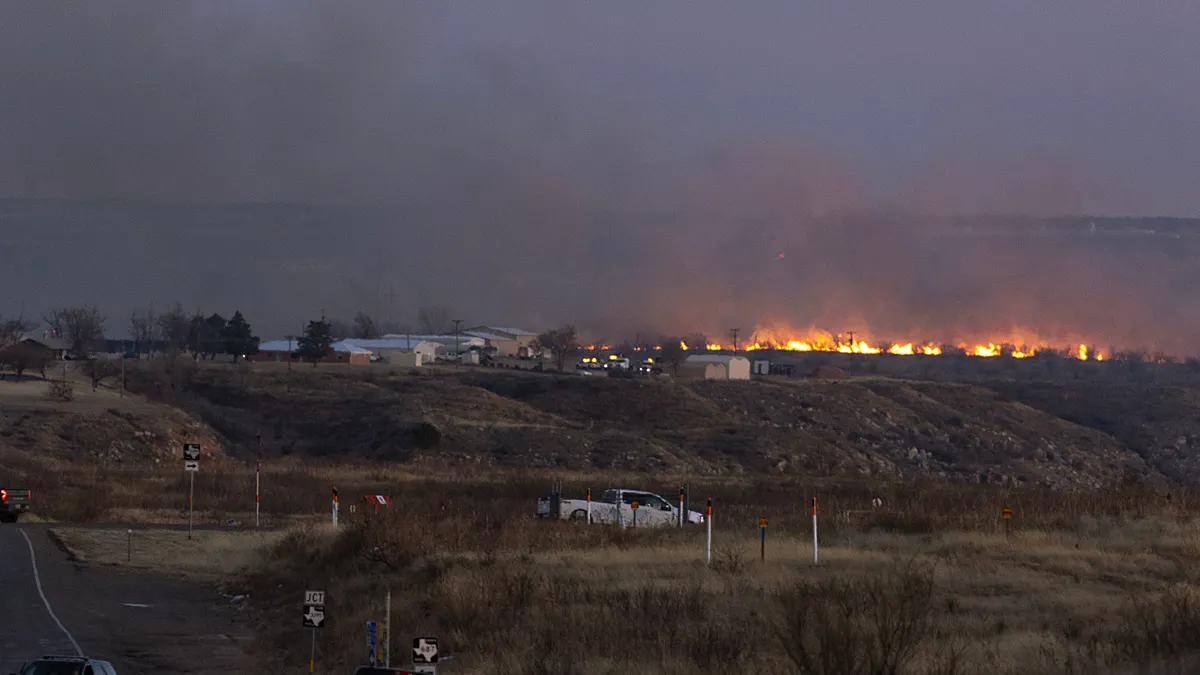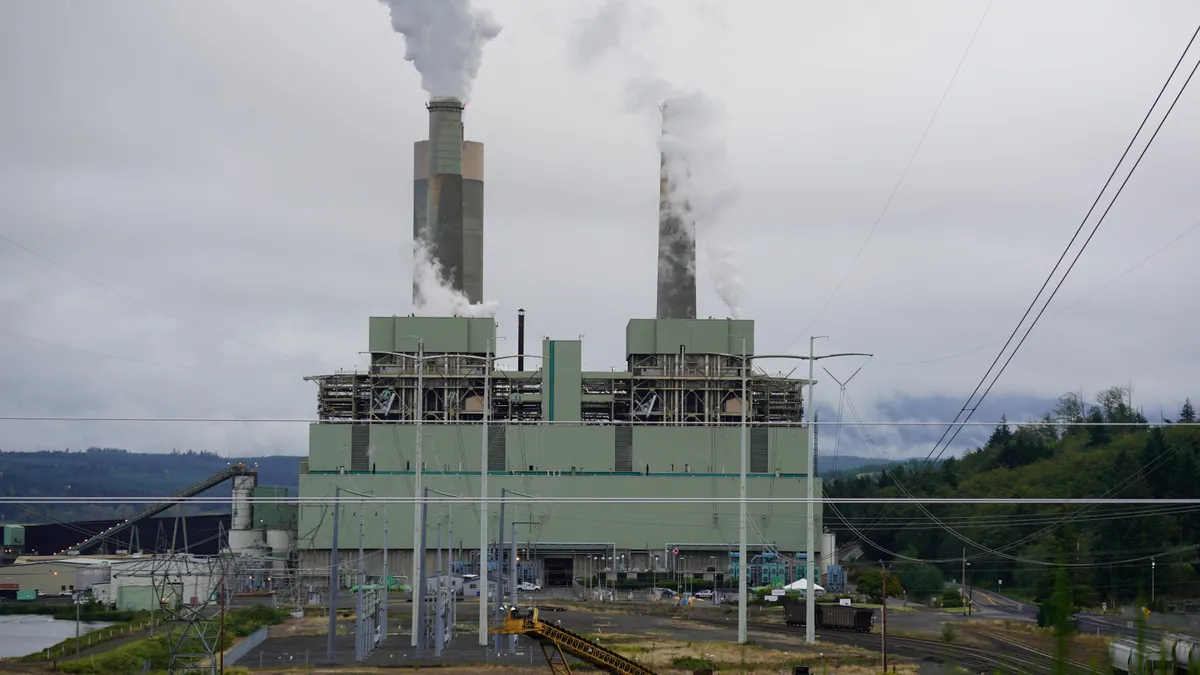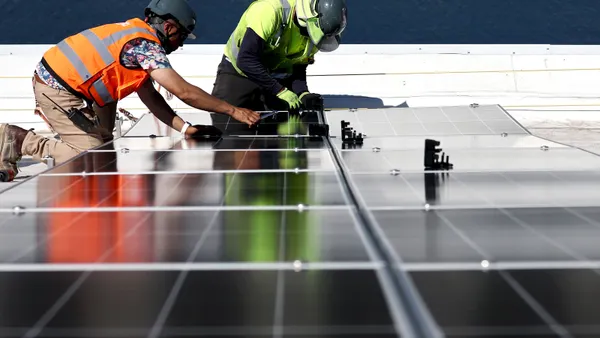This story is the second in a three-part series from Utility Dive exploring the grid reliability challenges that different regions in the U.S. face and how the electric sector is tackling them. You can read the previous story here.
This spring, as officials from the city of Memphis, Tenn., continued exploring whether to leave the Tennessee Valley Authority (TVA), the city’s power provider for more than 80 years, TVA president Jeffrey Lyash issued a stern warning: Look at what happened in Texas.
A winter storm a month earlier caused 4.5 million people to lose power across Texas. In Memphis, meanwhile, the power had stayed on even as temperatures dropped. Speaking to the Memphis City Council, Lyash emphasized the work TVA had done to protect its infrastructure from more extreme weather, saying leaving would be “a risk decision and not a cost decision.”
Although Memphis Light, Gas and Water (MLGW) officials still had issues with TVA’s costs, the reliability warning struck a nerve. MLGW president J. T. Young recommended suspending the process of leaving TVA last spring. But even as explorations continue, Young said reliability remains "the top issue" MLGW is considering.
“We are blessed in this region to have relatively high reliability and relatively low costs,” Young said in a public meeting in October. “Even in the cold winter months of the February storm … it ended up being a relatively, comparably mild episode and a whole lot went on behind the scenes to make that happen.”
The Texas storm was a region-wide reminder for utilities in the Southeast more familiar with summer peaking events that extreme weather is now a year-round concern. An analysis by the Southern Alliance for Clean Energy (SACE) found that the southeast region, spanning six states, is now a dual peaking region, with some utilities seeing more peak demand in the winter.
But as they look at winterizing equipment, utilities are also confronting more intense hurricanes and summer weather. In August and September, Hurricane Ida led to failures for Entergy New Orleans, leaving almost a million customers without power across Louisiana for days on end.
“The lesson [of Ida] is that we are just not prepared for climate change and that a 20th century energy infrastructure won’t work for where we are now,” said Logan Atkinson Burke, executive director of the New Orleans-based Alliance for Affordable Energy. “We know storms are getting stronger, we know they are happening more and more and we know we can’t just look to the utility’s perspective to solve it.”
Winter storms shift the peak
The record low temperatures of Winter Storm Uri, fueled by a polar vortex, created a perfect storm for the Texas grid. A post-mortem by the University of Texas at Austin Energy Institute concluded that “all types of generation technologies failed” and that forecasts underestimated demand by about 9,600 MW, or 14%.
While the temperature extremes may have broken the mold, the grid failures should not have been a surprise, said Alison Silverstein, a former Public Utility Commission of Texas and Federal Energy Regulatory Commission official. Texas sustained difficult winter storms in 2011 and 2014, both followed by extensive reports with recommendations to force power providers to better insulate vulnerable points of infrastructure against winter weather.
“They could have done this in 2011 or they could have thought of this when the PJM [Interconnection] and Northeast markets had their own polar vortexes. But Texas kind of ignored all of it,” Silverstein said. “We’re always fighting the next emergency in Texas. It’s hard to pick your head up out of the swamp and get the big picture.”
But other states face their own challenges as winter temperatures plummet. A 2018 winter storm that slammed five southeastern states left more than 100,000 people without power in North Carolina alone. A 2018 Nature Communications study found that Arctic warming is fueling extreme winter storms, with southeastern North America seeing the greatest cold temperature anomalies.
The SACE study found that winter peaks are varying, with a split between utilities that see summer and winter peaks. Maggie Shober, director of utility reform for SACE, said that as utilities say they are shifting to winter peaks, “we have seen this used as a reason for new gas plants” to improve reliability. Shober, however, said there’s more potential in demand-side treatments.
“When legislation focuses on electricity transmission and power plants as individual units in terms of resilience, that seems like a missed opportunity.”

Carey King
Assistant Director, University of Texas at Austin Energy Institute
Carey King, assistant director of the University of Texas at Austin Energy Institute, said utilities face challenges preparing for winter scenarios “that seem to occur once every 10 years or so.”
“At the same time, it’s hot every summer,” King said. “It’s a tradeoff to protect against both probabilities.”
Experts caution that unique aspects of Texas’ grid — especially its isolation from other networks — made it more vulnerable. But other states and providers have taken the incident as an omen and ramped up work to protect themselves. Expert recommendations say that among the steps power providers can take is ensuring a steady supply of gas and wholesale power, weatherizing facilities and supply balancing in the event that one part of a system goes down.
South Carolina governor Henry McMaster, R, wrote a letter in February to the state’s Office of Regulatory Staff (ORS), which oversees utilities, asking that the body evaluate the state’s readiness for a winter storm. “Dangerous ice storms and severe winter weather can significantly affect those areas typically unaccustomed to such conditions, and when they do, they often have disastrous consequences,” McMaster wrote.
A draft study released in September with the consulting group Guidehouse found that the state’s power system “appears to be adequately prepared to prevent and withstand prolonged outages caused by ice storms and winter weather events.” That was due, in part, to the state’s reliance on dispatchable renewable resources like hydropower and biomass, as well as its connections to nearby transmission systems. A final report due out by the end of the year will add more detail and provide a “clearinghouse of information,” said ORS chief operating officer Dawn Hipp.
“Given what we’ve seen in our assessment, there’s been continued investments in both process and technology and investments in infrastructure,” Hipp said. “That’s not to say there’s not room for improvement.”
The Texas legislature, meanwhile, has passed several bills to improve reliability since the blackouts. The Electric Reliability Council of Texas (ERCOT) released a 60-point improvement plan in July, including steps like new market rules, communicating with customers, power plant spot checks and improved assessments of high-impact weather.
Still, critics say the plan falls short; Silverstein, along with several other former PUCT officials, released a statement saying more efficiency and demand response measures are needed.
King said regulators could also take more steps to integrate the gas and electricity markets. “When legislation focuses on electricity transmission and power plants as individual units in terms of resilience, that seems like a missed opportunity.”
Hurricane season ramps up
A more familiar weather event for southern utilities are hurricanes, but even those more intense storms are taking a greater toll. Entergy’s statewide failures in the Category 4 Hurricane Ida, which contributed to at least 26 deaths in Louisiana alone, highlighted the risk of a power failure in a period of high heat and humidity. The storm damaged eight high-voltage transmission lines, damaged or destroyed some 31,000 poles and impacted dozens of towers across the state.
A September report by the McCullough Research group said Ida and other 2021 storms showed that “legacy equipment is unlikely to stand up to increasingly violent and frequent hurricanes.” The older transmission structures, the report found, were only equipped to resist winds up to 110 miles per hour (mph), but Ida brought winds of 140 mph or more. Preemptive replacement, the report found, will be necessary.
"Our customers have many needs and what they can afford on what for many of them is the largest bill they pay is something we take seriously."

Jim Schott
Vice President of Transmission, Entergy
Jim Schott, vice president of transmission for Entergy, acknowledged with a system "built over a long period of time," legacy pieces of infrastructure were built to standards "that may have been less stringent than they are now."
Schott said Entergy has spent several years upgrading the standards its infrastructure must meet and has spent an average of $1 billion a year over the past six years — including $3.6 billion in Louisiana and Texas alone — on transmission repairs. That includes adapting infrastructure to withstand 150 mph winds and protect low-lying equipment from flooding. On a per-customer basis, he said, that is more than most other utilities are spending on infrastructure.
However, he said, upgrading infrastructure to meet those standards is estimated to cost $12.5 billion total, a tall order when Entergy is also working to integrate renewables and meet federal reliability standards. In the company's third quarter earnings call last week, CEO Leo Denault said Entergy is working with Louisiana Gov. John Bel Edwards to secure between $1.2 billion and $1.3 billion in federal money to offset the costs of the 2020 storms as well as Ida.
"Our customers have many needs and what they can afford on what for many of them is the largest bill they pay is something we take seriously," Schott said.
Still, even before the storm, Entergy was presenting reliability problems for the region. A report filed with the New Orleans City Council showed that over the first six months of 2021, New Orleans saw tens of thousands of outages more than any year since 2018, due to “adverse weather conditions” and “much higher-than-normal rainfall totals.”
The totality has prompted the New Orleans City Council to take Entergy head on; the body has launched an investigation into its response to Hurricane Ida, requested a full resiliency report and could weigh new regulations.
“We know the utility’s response is going to be ‘give us a few billion dollars and we can fix everything,’” said Burke of Alliance for Affordable Energy. “That’s not in the best interest of the people trying to solve this problem. We want authorities to think about this in terms of what customers need and the resources we could invest in.”
As warmer oceans fuel more extreme and frequent hurricanes, utilities across the southeast are having to insulate their infrastructure from stronger winds and rains. Duke Energy, for example, has been building barriers around substations that had been flooded in previous storms, burying transmission lines and converting some wood poles to heartier steel. Jeff Brooks, a Duke spokesman, said the utility is also working on “self-healing technology” that can reroute power from elsewhere in the system if it detects any outages, part of an attempt to “layer improvements” for resiliency.
Duke had previously battled with North Carolina over a proposed $13 billion, 10-year resilience proposal, which the state ultimately rejected. However, after Hurricane Florence led to more than 1 million residents losing power, the state approved a rate hike to support some grid improvements.
Brooks said Duke is also engaged in an advanced climate report, which will identify the most effective investments. “This is really a new science for the utility industry,” Brooks said.
Looking ahead
Nearly 20 utilities across 11 states have proposed creating a Southeast Energy Exchange Market (SEEM), a decentralized energy exchange market that backers say would more efficiently use existing transmission. Besides lowering costs for some 50 million people, the backers say an expanded market would boost reliability by increasing the electricity supply available.
The proposal is set to take effect after FERC deadlocked on a final decision last month, despite some concerns from regulators. In October, FERC chairman Richard Glick, a Biden appointee, criticized the model presented and said it would not serve the same affordability and reliability benefits other regional markets provide.
Meanwhile, utilities are forging ahead with their own reliability plans, balancing the costs of new infrastructure with the necessity of keeping the lights on. In 2019, Southern Company subsidiary Georgia Power became the first of the conglomerate's utilities to include resilience in an Integrated Resource Plan, a step that is now standard for the utility as it copes with extreme weather. A 2021 disclosure form says the company is investing $13 billion in capital improvements for transmission and delivery, including self-healing grids.
Southeast utilities may get a breather from the bad headlines this winter; a FERC/NERC presentation in October projected an adequate reserve margin for winter storms this year. ERCOT, the presentation reported, had added 14 GW of generation since last winter, boosting the reserve margin.
“We understand there may be more outages on the grid, but we can ensure resiliency at the hyper-local level."

Maggie Shober
Director of Utility Reform, Southern Alliance for Clean Energy
But customers are also taking heed, with renewed interest in residential and business storage and energy efficiency tools. A June S&P analysis found that Texas was poised to add 1,400 MW of battery storage by September, eight times more than had been online the year before. Pilot projects in Austin, Birmingham and elsewhere seek microgrid and solar-plus-storage neighborhoods that reduce reliance on the grid.
Shober of SACE said utilities could do more to encourage those tools, rather than spending heavily on protecting infrastructure that may not withstand climate change-fueled extremes.
“We understand there may be more outages on the grid, but we can ensure resiliency at the hyper-local level,” Shober said. “We’re at a point where each local community can start to look at the impacts and adjust in a way that is the least disruptive to people’s lives and done in a way that supports clean and healthy communities.”
CORRECTION: This story has been corrected to accurately reflect the findings of the SACE study.






















